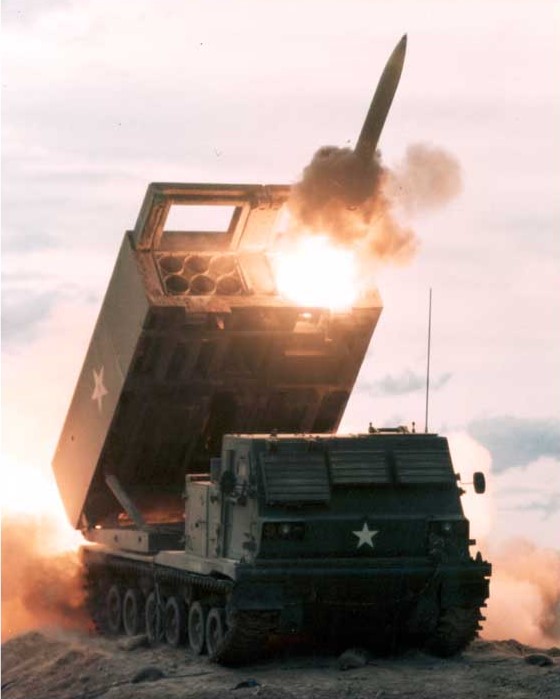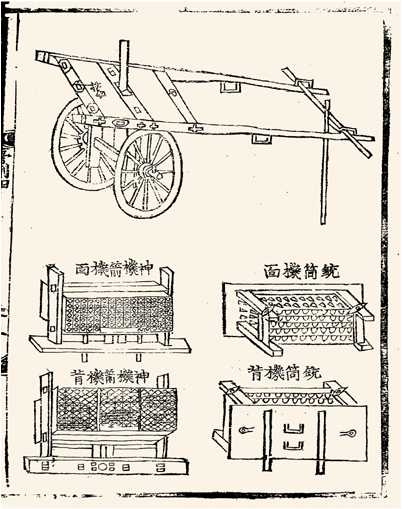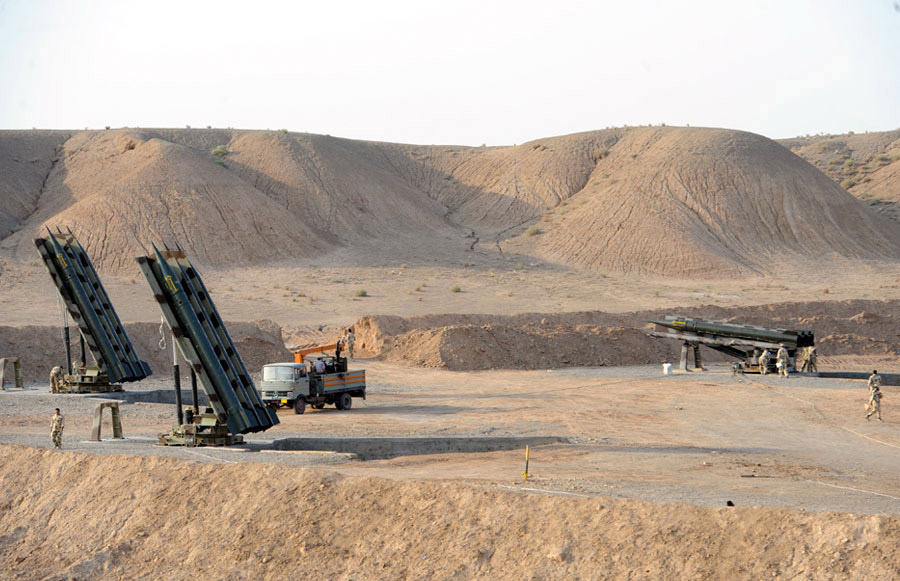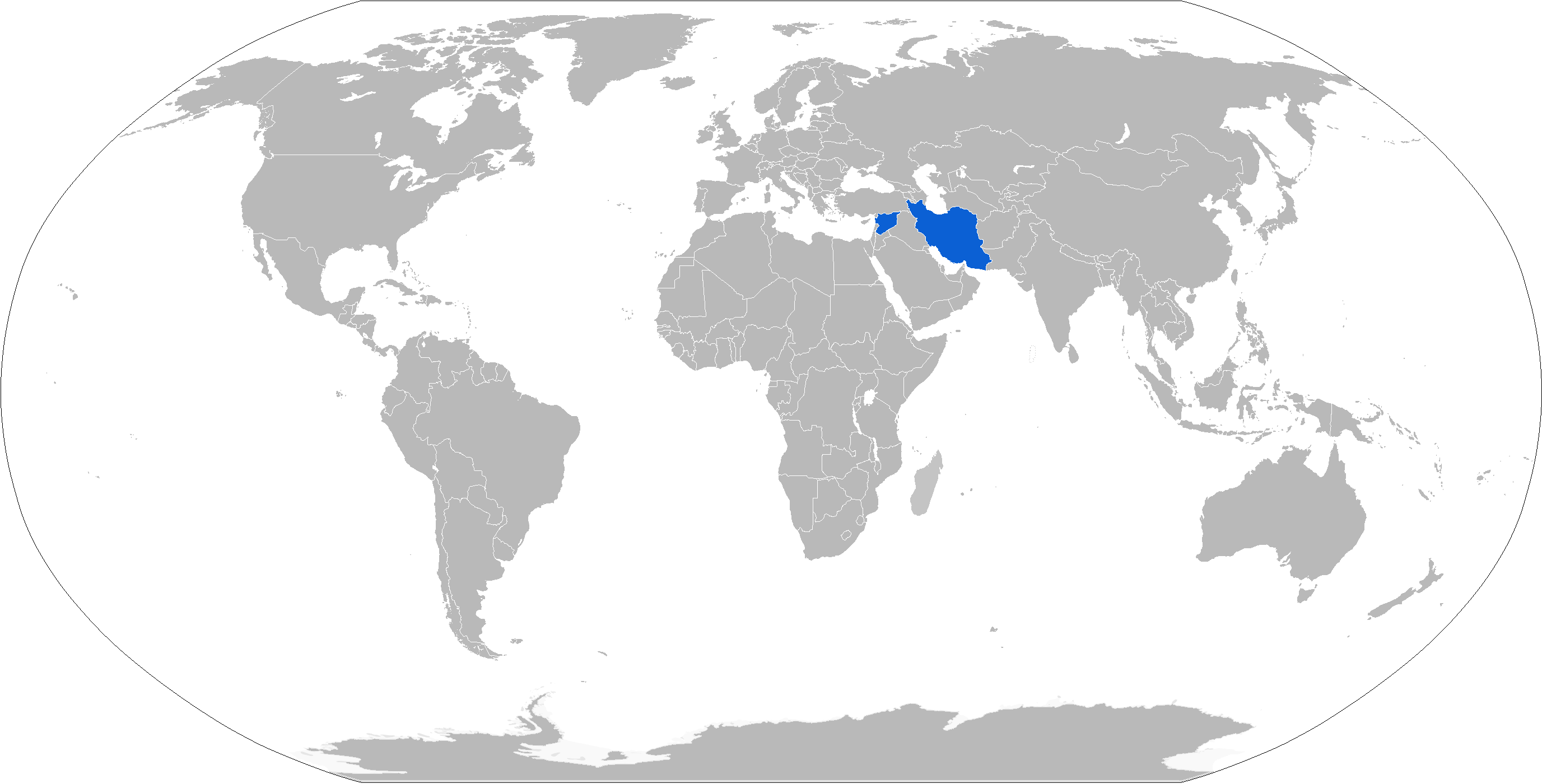|
Naze'at 6-H
The Naze'at 6-H and Naze'at 10-H/Mushak-120/Iran-130 ( lit. ''Those Who Pull Out'', in reference to ''the angels who tear out the souls of the wicked'') are two Iranian long-range artillery rockets with ranges of about 100 km. The Naze'at 10-H is larger, more powerful, and has a longer range than the Nazeat 6-H. Like Iran's similar shaped Zelzal rockets, Naze'at rockets do not have a guidance system. Both systems are also widely known without the -H suffix, as the Naze'at 6 and Naze'at 10. The Iranians also have developed another 500 kg version called the Mushak-160 with 160 km range. History The Naze'at family was developed during the 1980s with Chinese assistance in an attempt to build an equivalent of the FROG-7 missile. Specifications ; *Max. range (km): 100 *Min. range (km): 80 *Length (mm): 6290 *Diameter (mm): 356 *Initial weight (kg): 960 *Warhead weight (kg): 130 *C.E.P (%): <5% Max. range *Average Action Time (s): 9 *Specific Impulse (s): 2 ... [...More Info...] [...Related Items...] OR: [Wikipedia] [Google] [Baidu] |
Artillery Rocket
Rocket artillery is artillery that uses rocket (weapon), rockets as the projectile. The use of rocket artillery dates back to medieval China where devices such as fire arrows were used (albeit mostly as a Psychological warfare, psychological weapon). Fire arrows were also used in multiple launch systems and transported via carts. In the late nineteenth century, due to improvements in the power and range of conventional artillery, the use of early military rockets declined; they were finally used on a small scale by both sides during the American Civil War. Modern rocket artillery was first employed during World War II, in the form of the German Nebelwerfer family of rocket ordnance designs, Soviet Katyusha rocket launcher, Katyusha-series and numerous other systems employed on a smaller scale by the Western allies and Japan. In modern use, the rockets are often guided by an internal guiding system or GPS in order to maintain accuracy. History Early history The use of rockets as so ... [...More Info...] [...Related Items...] OR: [Wikipedia] [Google] [Baidu] |
Zelzal-1
Zelzal-1 (, meaning "Earthquake-1") is an Iranian-made heavy artillery rocket with an estimated range of 160 km. It is believed to be owned by the Iranian Armed Forces and Hezbollah. The rocket received relatively little use but was the basis for the more successful Zelzal-2 artillery rocket. Users * * * See also * Aerospace Force of the Islamic Revolutionary Guard Corps *Armed Forces of the Islamic Republic of Iran *Defense industry of Iran * Equipment of the Iranian Army *Fateh-110 * Zelzal-2 *Zelzal-3 Zelzal-3 (, meaning "earthquake") is an Iranian-made solid propellant guided artillery rocket with a range of 200 km. Cordesman, Anthony H. (2007)Lessons of the 2006 Israeli-Hezbollah War p. 11. It is an upgrade of the Zelzal-2 rocket with sl ... References Weapons of Iran Ballistic missiles of Iran Military equipment introduced in the 1990s {{Weapon-stub he:זלזאל ... [...More Info...] [...Related Items...] OR: [Wikipedia] [Google] [Baidu] |
Rocket Artillery
Rocket artillery is artillery that uses rockets as the projectile. The use of rocket artillery dates back to medieval China where devices such as fire arrows were used (albeit mostly as a psychological weapon). Fire arrows were also used in multiple launch systems and transported via carts. In the late nineteenth century, due to improvements in the power and range of conventional artillery, the use of early military rockets declined; they were finally used on a small scale by both sides during the American Civil War. Modern rocket artillery was first employed during World War II, in the form of the German Nebelwerfer family of rocket ordnance designs, Soviet Katyusha-series and numerous other systems employed on a smaller scale by the Western allies and Japan. In modern use, the rockets are often guided by an internal guiding system or GPS in order to maintain accuracy. History Early history The use of rockets as some form of artillery dates back to medieval China where devices ... [...More Info...] [...Related Items...] OR: [Wikipedia] [Google] [Baidu] |
List Of Equipment Of The Iranian Army
This page includes weapons used by both the Islamic Republic of Iran Army Ground Forces, Ground Forces of the Islamic Republic of Iran Army and the Islamic Revolutionary Guard Corps Ground Forces, Ground Forces of the Islamic Revolutionary Guard Corps. From 1925 to the Iranian Revolution in 1979, Iran was primarily equipped with Western hardware and equipment. Cases exist where Iran was supplied with equipment before it was even made standard in the country that developed it (for example the US F-14 Tomcat jet, and the British Chieftain (tank), Chieftain tank). Primary suppliers included the United States, United Kingdom, Britain, France, West Germany, Italy, Israel, and the Soviet Union. The post-revolution sanctions and the Iran–Iraq War had a dramatic effect on Iran's inventory of Western equipment. Under the pressures of war, supplies were quickly exhausted and replacements became difficult to come by. The war forced Iran to turn towards Ba'athist Syria, Syria, Brazil an ... [...More Info...] [...Related Items...] OR: [Wikipedia] [Google] [Baidu] |
Defense Industry Of Iran
Iran's military industry manufactures and exports various types of arms and military equipment. Iran's military industry, under the command of Ministry of Defense and Armed Forces Logistics (Iran), Iran's Ministry of Defence and Armed Forces Logistics, is composed of the following main components: Security of Telecommunication and Information Technology (STI) is also part of the Iranian defense industry. History Iran's military industry was born under the last Pahlavi dynasty, Shah of Iran, Mohammad Reza Pahlavi. In 1973, the Iran Electronics Industries (IEI) was founded to organize efforts to assemble and repair foreign-delivered weapons. Most of Iran's weapons before the Islamic revolution were imported from the United States and Europe. Between 1971 and 1975, the Shah went on a buying spree, ordering $8 billion in weapons from the United States alone. This alarmed the United States Congress, which strengthened a 1968 law on arms exports in 1976 and renamed it the Arms Export ... [...More Info...] [...Related Items...] OR: [Wikipedia] [Google] [Baidu] |
Islamic Revolutionary Guard Corps Aerospace Force
The Islamic Revolutionary Guard Corps Aerospace Force, officially known as the Islamic Revolutionary Guard Corps Air and Space Force (IRGCASF; , acronymed in Persian as NEHSA), is the Iran's ballistic missiles program, strategic missile, air force, air, and space force of the Islamic Revolutionary Guard Corps (IRGC). It was renamed from the IRGC Air Force to the IRGC Aerospace Force in 2009. The force's commander, Amir Ali Hajizadeh, was killed along with 20 other senior officers during June 2025 Israeli strikes on Iran, the series of Israeli strikes launched on 13 June 2025. The role was vacant for a day before being filled by Majid Mousavi. Aviation forces Most American public sources disagree and argue on which aircraft are operated by the AFAGIR. The Washington Institute for Near East Policy said in 2005 that "[t]he backbone of the IRGCAF consists of ten Su-25 Frogfoot attack aircraft, including seven flown from Iraq to Iran during the 1991 Gulf War, kept airworthy with ... [...More Info...] [...Related Items...] OR: [Wikipedia] [Google] [Baidu] |
Zelzal-3
Zelzal-3 (, meaning "earthquake") is an Iranian-made solid propellant guided artillery rocket with a range of 200 km. Cordesman, Anthony H. (2007)Lessons of the 2006 Israeli-Hezbollah War p. 11. It is an upgrade of the Zelzal-2 rocket with slightly improved range and was first shown to the public in 2007. A variant, the Zelzal-3B, has a smaller warhead and a range of 250 km. The shape and dimensions of the Zelzal-3 are nearly identical with previous versions except that the nosecone is cone shaped rather than the dome shaped Zelzal-1 and Zelzal-2. The Zelzal-3 has received little use as the much more accurate Fateh-110 missile was also developed from the Zelzal-2. Background Zelzal series rockets, along with Naze'at series rockets, are Iranian rockets that were designed and built during the Iran-Iraq war. According to Iranian sources, later on, Fateh-110 generation missiles were designed and built from the Zelzal system. Also, this system has been used to build some sp ... [...More Info...] [...Related Items...] OR: [Wikipedia] [Google] [Baidu] |
Zelzal-2
Zelzal-2/Mushak-200 (Persian: زلزال-۲, meaning "Earthquake") is an Iranian unguided long-range artillery rocket. The Zelzal-2 is a 610 mm truck-launched rocket that has a payload of 600 kg and a range of about 200 km. Development of the Zelzal series began in 1990 and the Zelzal-2 was first shown in 1998. It is developed from the Zelzal-1 and was developed into the Zelzal-3. It has been exported to Syria, Hezbollah, and the Houthis, and has seen combat use in the Syrian Civil War and Yemeni Civil War. The rocket is thought to be based on the Soviet 9K52 Luna-M rocket. Variants Maysaloun missile A Syrian version of the system, called Maysaloun missile, was named after the Battle of Maysalun. Basic technology of the Syrian version is based on the Iranian Zelzal-2 and was first revealed in 2012. Basic variant of the missile has the power to have a maximum range of 130 or 210 km and 600 kg warhead weight. The missile has CEP of 300 m, and destruction radius ... [...More Info...] [...Related Items...] OR: [Wikipedia] [Google] [Baidu] |
Circular Error Probable
Circular error probable (CEP),Circular Error Probable (CEP), Air Force Operational Test and Evaluation Center Technical Paper 6, Ver 2, July 1987, p. 1 also circular error probability or circle of equal probability, is a measure of a weapon system's Accuracy and precision, precision in the military science of ballistics. It is defined as the radius of a circle, centered on the aimpoint, that is expected to enclose the landing points of 50% of the Round (firearms), rounds; said otherwise, it is the median error radius, which is a 50% confidence interval. That is, if a given munitions design has a CEP of 100 m, when 100 munitions are targeted at the same point, an average of 50 will fall within a circle with a radius of 100 m about that point. There are associated concepts, such as the DRMS (distance root mean square), which is the square root of the average squared distance error, a form of the standard deviation. Another is the R95, which is the radius of the circle ... [...More Info...] [...Related Items...] OR: [Wikipedia] [Google] [Baidu] |
Transporter Erector Launcher
A transporter erector launcher (TEL) is a missile vehicle with an integrated tractor unit that can transport, elevate to a firing position and launch one or more rockets or missiles. History Such vehicles exist for both surface-to-air missiles and surface-to-surface missiles. Early on, such missiles were launched from fixed sites and had to be loaded onto trucks for transport, making them more vulnerable to attack, since once they were spotted by the enemy they could not easily be relocated, and if they were it often took hours or even days to prepare them for launch once they reached their new site. Usually a number of TELs and TELARs are linked to one command post vehicle (CP or CPV). They may use target information from target acquisition, designation and guidance radar (TADAGR or TAR). Transporter erector launcher and radar (TELAR) A transporter erector launcher and radar (TELAR) is a type of TEL that also incorporates part or all of the radar system necessary for firi ... [...More Info...] [...Related Items...] OR: [Wikipedia] [Google] [Baidu] |
HTPB
Hydroxyl-terminated polybutadiene (HTPB) is an oligomer of butadiene terminated at each end with a hydroxyl functional group. It reacts with isocyanates to form polyurethane polymers. HTPB is a translucent liquid with a color similar to wax paper and a viscosity similar to corn syrup. The properties vary because HTPB is a mixture rather than a pure compound, and it is manufactured to meet customers' specific requirements. A typical HTPB is R-45HTLO. This product consists of oligomeric units typically containing 40–50 butadiene molecules bonded together, with each end of the chain terminated with a hydroxyl Hgroup: R-45HTLO has a functionality of 2.4-2.6, which means that there is (approximately) one additional hydroxyl group located along the chain for every two oligomeric units. This provides side-to-side linkage for a stronger cured product. HTPB is usually cured by an addition reaction with di- or poly-isocyanate compounds. Uses Materials production Polyurethanes prep ... [...More Info...] [...Related Items...] OR: [Wikipedia] [Google] [Baidu] |





